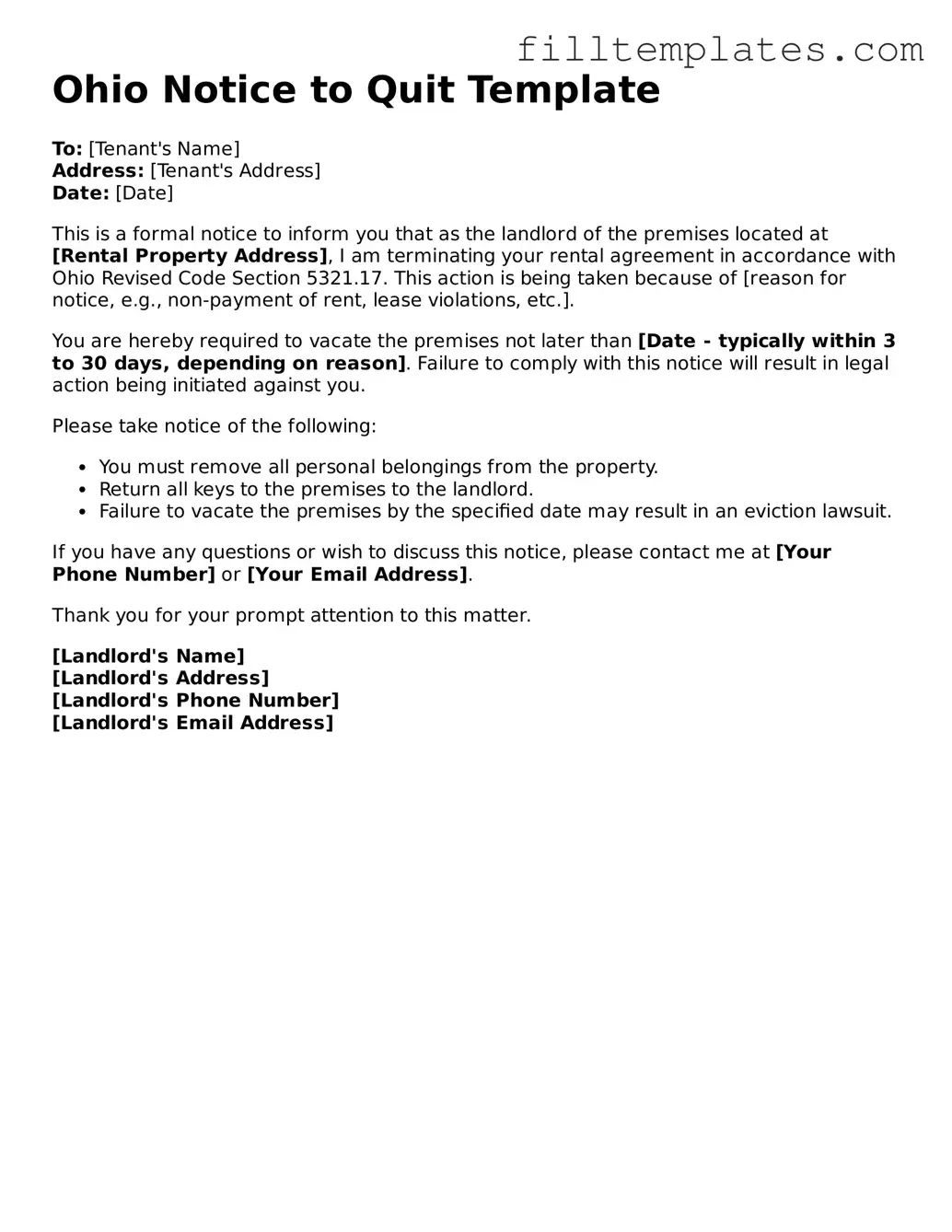Ohio Notice to Quit Template
To: [Tenant's Name]
Address: [Tenant's Address]
Date: [Date]
This is a formal notice to inform you that as the landlord of the premises located at [Rental Property Address], I am terminating your rental agreement in accordance with Ohio Revised Code Section 5321.17. This action is being taken because of [reason for notice, e.g., non-payment of rent, lease violations, etc.].
You are hereby required to vacate the premises not later than [Date - typically within 3 to 30 days, depending on reason]. Failure to comply with this notice will result in legal action being initiated against you.
Please take notice of the following:
- You must remove all personal belongings from the property.
- Return all keys to the premises to the landlord.
- Failure to vacate the premises by the specified date may result in an eviction lawsuit.
If you have any questions or wish to discuss this notice, please contact me at [Your Phone Number] or [Your Email Address].
Thank you for your prompt attention to this matter.
[Landlord's Name]
[Landlord's Address]
[Landlord's Phone Number]
[Landlord's Email Address]
